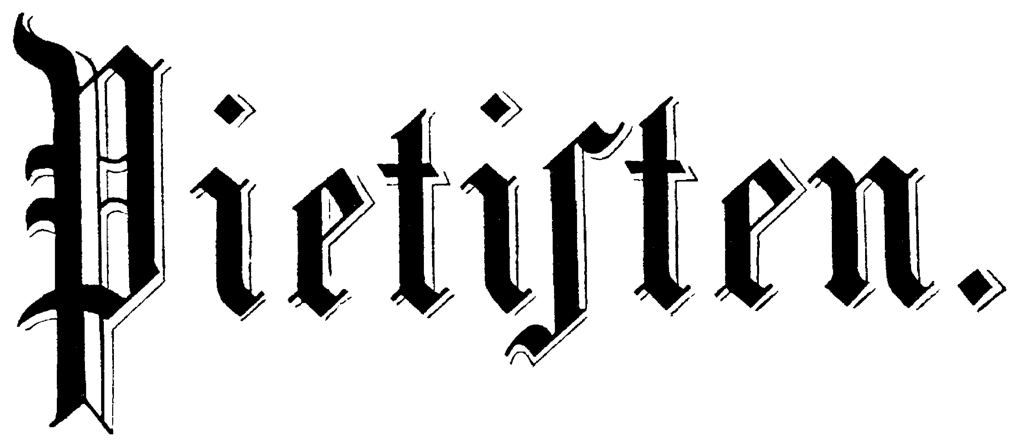Franklin, Don
Remembering Don Paul Olson (Winter 1990)
In writing to renew my subscription to Pietisten, it was also my plan to order a gift subscription for Don Paul Olson, whom I met by chance in California this past summer where he was serving as chaplain at the Samarkand home in Santa Barbara.
J. S. Bach and Pietism (Spring 1993)
New research by theologians and music historians has given rise to a new set of questions about J. S. Bach’s relationship to Pietism, a reform movement that was flourishing in Germany when he wrote his cantatas and passions. What links, if any, did Bach have to the movement? How well did he know the writings of the Pietistic fathers? And, what influence did their writings have on his sacred works?
Bach’s Career as a Church Musician: Early Years (Summer 1993)
My purpose, in this series of articles, is to examine Bach’s relationship to Pietism in light of the new research that has been carried out in theological circles over the past two decades. Many church historians, including Peter Erb, Ernest Stoeffler, and Dale Brown, no longer describe Pietism as a separatist movement that sprang to life at the end of the seventeenth century and quickly spread throughout northern Europe, eventually reaching America. Rather, they argue, it needs to be seen as the outgrowth of a reform movement that began shortly after the Reformation and continued well into the nineteenth century. In response to this more comprehensive — some call it revisionist — view of Pietism, music historians have begun to reevaluate and reinterpret the movement’s influence on church music. In the case of J. S. Bach (1685-1750), a reappraisal is important not only because of his stature as a composer, but also because he was active as a church musician during the period in which Pietism reached its peak in Germany.
J. S. Bach and Pietism (Fall 1993)
In the previous article we described Bach's encounters with Pietism in his early years, beginning with his childhood in Ohrdruf and continuing until his appointment, at the age of eighteen, as organist in Amstadt in his native Thuringia. We left off our account when Bach took a leave from his position to travel to Lübeck in northern Germany. On returning home after four months - instead of the four weeks that had been granted him - he stated that he had remained in Lübeck in order to "gain an understanding of one problem and another connected with his art." Although the avowed purpose of his trip was to hear Buxtehude play the organ, it is clear that Bach arranged his visit to coincide with the annual perfonnance of the city's Abendmusiken, a series of concerts perfonned during Advent. There he heard a new style of music, one that, as we will see, had far reaching musical and theological implications for his career as a church musician.
J. S. Bach and Pietism (Spring 1994)
After describing Bach's trip to Lübeck and his apprenticeship with Buxtehude, we now turn our attention to his tenure as organist in Mühlhausen. In traveling the few miles between Amstadt and Mühlhausen, Bach moved from a small provincial town, where he was a parish organist, to an Imperial Free City, where he held the city's most prestigious musical post.
J. S. Bach and Pietism (Fall 1994)
Up to this point in our study, we have traced Bach's encounters with pietism from his early childhood in Ohrdruf to his first position of importance, namely, that of organist in Mühlhausen. In the process of retracing Bach's steps, we have uncovered evidence indicating that he did not reject pietism out of hand, as earlier studies have concluded, but, rather, that he accepted, and often sought out, positions in places where it flourished. The evidence has come to light in a wide variety of sources: historical studies of German cities and provinces; biographical sketches of superintendents and pastors, as well as city and court officials; new research on the historical, social, and theological contexts of pietism; and, finally, the music itself. Rarely is the evidence explicit; often it is fragmentary. Taken together, however, it conveys a new image of Bach.
J.S. Bach’s St Matthew Passion as a Lenten Meditation (Winter 2004-2005)
Johann Sebastian Bach’s St Matthew Passion was first performed at the St. Thomas church in Leipzig as part of the Good Friday service. As was the local practice, the first part of the passion was performed before; the second part, after the sermon.
